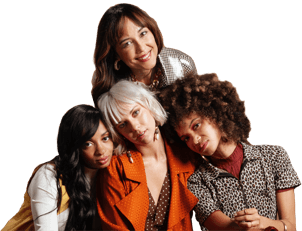Hair Dyes Linked to Cancer Study Shows

The National Cancer Institute reports that 12% of women will get breast cancer in their lifetime. It is the second most common cancer among women, averaging close to 40,000 deaths each year. People have been misinformed about the causes of cancer, which has lead to women thinking they are genetically predisposed. The truth is, that oftentimes it can be the environment that links us to cancer, rather than our genetic makeup.
Smoking, drinking alcohol, birth control pills, lack of exercise, being overweight and even excessive bra wearing and deodorant are all common factors that can contribute to cancer. Looking at this list is scary, when you consider that each and every one of us are guilty of more than a few of those factors.
Things get a little scarier for women because studies are now showing links between hair products and cancer. Women take great pride in their hair, and styling, color and design are all given high priority in terms of appearance and image. It was already well established that hairdressers have high risk of cancer due to their high exposure levels to carcinogens in hair products. The next logical progression from that would be that those using the same products would also be at risk.

Over 5,000 chemical products are used in hair dyes, that have been previously proven to be carcinogenic to animals. With estimates that over one-third of women and 10% of men in the world use hair dye products, scientists have been trying to establish if humans are at risk by using these dyes in their hair. What they found is that chemicals found in hair dyes can promote cancer, but there is no definitive proof of causation.
Recent changes have been made in manufacturing to eliminate as many carcinogens as possible, but hair dye would not be able to color hair without leaving some of those harmful chemicals in the mix. According to research, the biggest hair product culprits are dyes, relaxers, straighteners, and any creams that contain cholesterol or placenta. Again causation has not been proven, but there is significant evidence that these products are risk factors for cancer development.
Studies were taken even further recently, to show that there are differences in risk patters of African American and Caucasian women. The patterns show different risk rates correlated to the different hair dyes used by each group. African American women tend to use darker color dyes which were linked to a 51% higher risk of breast cancer and a 72% higher risk of estrogen positive breast cancer. For Caucasian women, straighteners increase risk by 74%. When used with hair dye, the risk increases to 240%! These numbers should definitely catch your attention.

With the wide variety of cancers already causing an estimated 600,000 deaths in the United States alone, men and women alike need to be cautious. While we can't control the environment, we can control what goes into and on to our bodies. When it comes to hair dyes, the ingredients we need to watch for are resorcinol, ammonia, PPD (para-Phenylenediamine), persulfates, lead acetate, and 4-ABP.
Carcinogens, like those present in hair dyes and other hair chemicals, act on the body's cells in two ways. They can either directly cause genetic mutation which fosters abnormal growths like tumors, or they attack our genes directly to cause rapid multiplication. This does not mean that every carcinogen will cause cancer, it is simply an increased risk.
Our genes are under constant attack from carcinogens but thank fully, our DNA is an expert at repairing itself. What this means is that not every exposure to a carcinogen will lead to cancerous cell development. Certain additional factors impact the repair services such as age, length of exposure and potency of the carcinogen. Regarding these factors, there is not a lot we can do, which is why it is important to just be aware of the risks and them minimize where you can.
If lowering your risk of cancer is on your list of priorities (and let's face it, it's most likely on everyone's list) then there are alternatives for you when it comes to hair dyes. Choose products that provide lower doses of ammonia, resorcinol, and PPD like henna hair dyes.

These more natural products are designed for at home use. If you go to salons for hair dye and other chemical treatments they will most likely use carcinogenic materials. You can always ask your hairdresser if they have any alternative and lower-risk products.
The truly scary fact about cancer is that it does not discriminate. People of any gender, age and ethnicity can develop cancer at any time. Since we know that certain products we use come with higher risk levels, then we can make choices to eliminate or at the very least reduce their use. No longer using hair dye is not going to magically protect you from cancer, but it does remove one risk factor from your life.
At Hair La Vie, we know that your hair is an integral part of how you present yourself to the world and shape your authentic style.
Join our private Facebook Community for a safe, human-moderated space to share your Hair Journey, discover new natural beauty, and take steps towards becoming “you” with the help of an understanding, supportive community.
Join now for instant access to livestreams, discussions, and exclusive access to new products!
Tutorials, education, and helpful tips sent right to your inbox.
JOIN THE GROUP

At Hair La Vie, we know that your hair is an integral part of how you present yourself to the world and shape your authentic style.
Join our private Facebook Community for a safe, human-moderated space to share your Hair Journey, discover new natural beauty, and take steps towards becoming “you” with the help of an understanding, supportive community.
Join now for instant access to livestreams, discussions, and exclusive access to new products!
JOIN THE GROUP